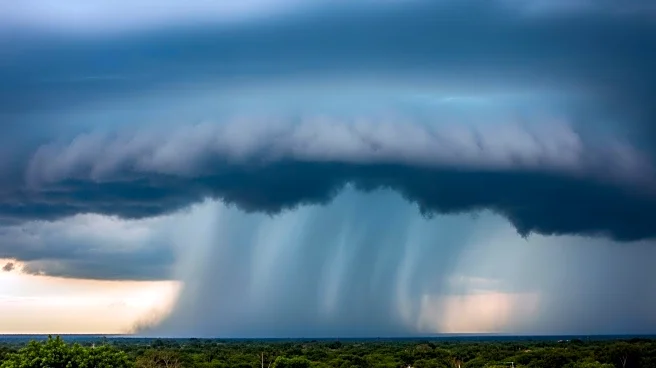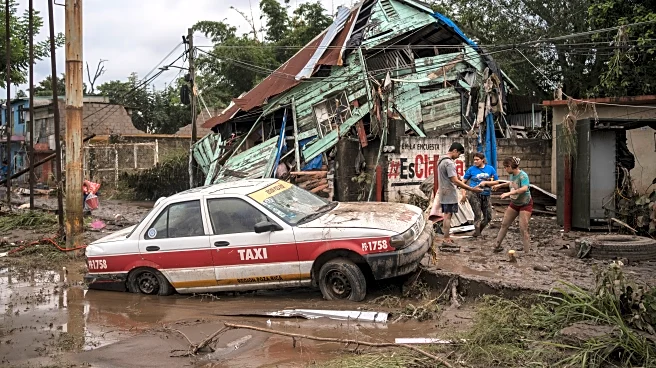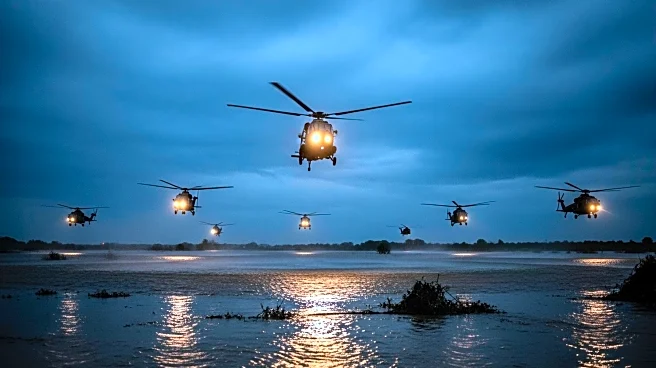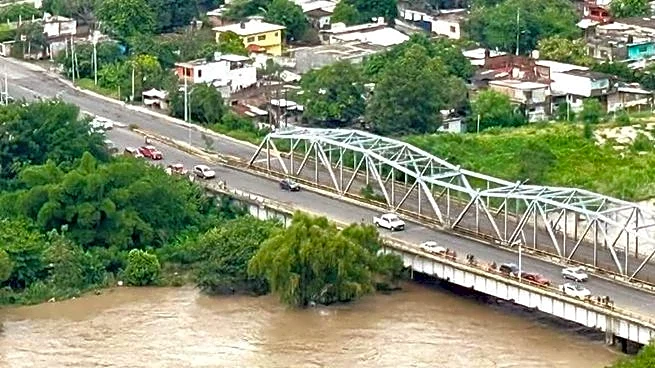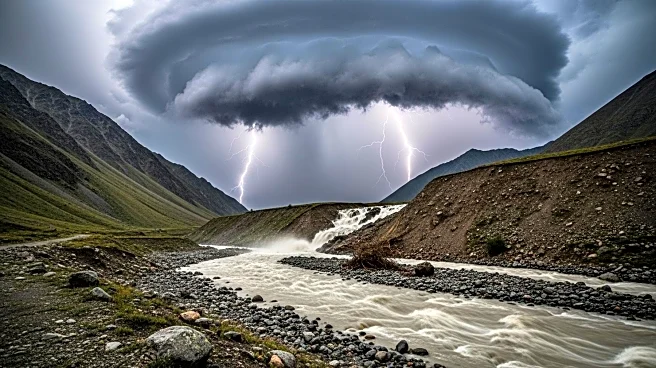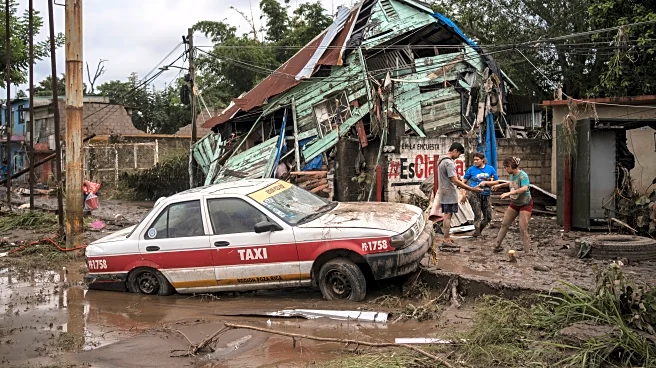What's Happening?
Mexico is grappling with the aftermath of torrential rains that have led to widespread flooding and landslides across the country. The death toll has risen as emergency response efforts are underway. President Claudia Sheinbaum has convened governors from the most affected states to coordinate a comprehensive emergency response plan. She also visited Poza Rica in Veracruz state, one of the hardest-hit areas. The situation has prompted a national effort to address the immediate needs of affected communities and mitigate further damage.
Why It's Important?
The severe weather conditions in Mexico highlight the vulnerability of regions to natural disasters and the urgent need for effective disaster management strategies. The increased death toll and damage underscore the importance of preparedness and resilience in the face of climate-related events. This situation may prompt a reevaluation of infrastructure and emergency response systems to better protect communities in the future. The government's response and coordination efforts are crucial in providing relief and support to affected areas, potentially influencing public policy and resource allocation for disaster preparedness.
What's Next?
As Mexico continues to deal with the consequences of the torrential rains, the focus will be on recovery and rebuilding efforts. The government is expected to implement measures to prevent similar disasters in the future, possibly involving infrastructure improvements and enhanced emergency response capabilities. The collaboration between federal and state authorities will be critical in ensuring effective relief distribution and support for affected communities. Additionally, there may be increased attention on climate change adaptation strategies to mitigate the impact of extreme weather events.
Beyond the Headlines
The situation in Mexico serves as a reminder of the broader implications of climate change and the need for global cooperation in addressing environmental challenges. The impact of the torrential rains may lead to discussions on sustainable development and the importance of integrating climate resilience into urban planning and policy-making. The event also highlights the role of international aid and support in disaster response, as countries may seek assistance from global organizations to bolster their recovery efforts. Long-term strategies may involve cross-border collaborations to enhance regional resilience against climate-related disasters.
